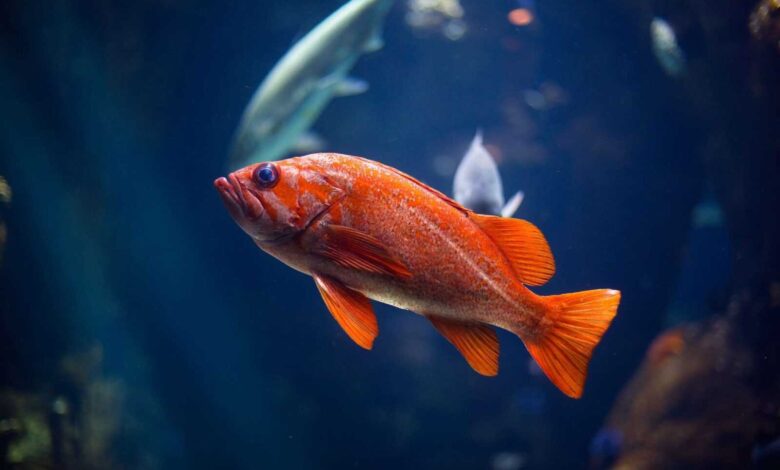
How to breed pet fish can be an enriching and rewarding experience for fish enthusiasts. Whether you’re interested in breeding freshwater or saltwater fish, understanding the fundamentals of conditioning, spawning, and fry care is essential. Here’s a detailed step-by-step guide and key considerations for successful fish breeding.
1. Understanding the Basics of How to Breed Pet Fish
Selecting Healthy Breeding Stock
Understanding the importance of choosing healthy breeding stock with desirable traits and optimal genetic characteristics.
Grasping Reproductive Behavior
Learning about the specific breeding behaviors exhibited by various fish species, including courtship rituals and egg fertilization techniques.
Creating an Optimal Breeding Environment
Researching and implementing the ideal water conditions, tank size, and environmental parameters to foster a conducive breeding environment for your chosen fish species.
2. Conditioning Pet Fish for Breeding: Preparing for Success
Designing a Nutritious Diet
Curating a well-balanced and protein-rich diet for the breeding pair to enhance their overall health, reproductive capabilities, and vitality.
Establishing a Stress-Free Environment
Identifying and creating an environment with ample hiding places, suitable lighting, and minimal disturbances to reduce stress and encourage natural breeding behavior.
3. Setting up a Breeding Tank: Creating the Ideal Environment
Maintaining Stable Water Parameters
Understanding the specific water temperature, pH levels, and water hardness requirements for your selected fish species and ensuring consistency in these parameters.
Incorporating Suitable Breeding Materials
Utilizing live plants, spawning mops, or artificial structures as secure nesting sites for the breeding pair, providing a safe and conducive environment for egg deposition.
4. Spawning Pet Fish: Facilitating the Breeding Process
Observing Breeding Behavior
Closely monitoring the behavior of the breeding pair for subtle signs of courtship, readiness to spawn, and successful egg fertilization within the breeding tank.
Simulating Natural Breeding Conditions
Adjusting lighting, water flow, and environmental cues to mimic the natural breeding habitat of the selected fish species and encourage successful egg deposition.
5. Hatching Pet Fish Eggs: Nurturing the Early Stages
Maintaining Optimal Water Conditions
Ensuring stable water quality, adequate oxygenation, and appropriate water movement to foster a healthy and safe hatching environment for the developing fish eggs.
Protecting Eggs from Threats
Implementing protective measures, such as mesh dividers or breeding nets, to shield the delicate fish eggs from potential threats and aggressive tank mates during the hatching process.
6. Raising Pet Fish Fry: Supporting Growth and Development
Providing Nutritious Fry Diet
Introducing a diverse and nutrient-rich diet, including freshly hatched brine shrimp, micro worms, or specialized fry food to meet the nutritional needs of the growing fish fry.
Monitoring Water Quality
Regularly testing and maintaining optimal water parameters, implementing efficient filtration systems, and conducting routine water changes to ensure a clean and healthy environment for the growing fry.
7. Troubleshooting Pet Fish Breeding Problems: Addressing Challenges
Identifying Breeding Issues
Recognizing common breeding challenges, such as unsuccessful spawning, egg fungus, or poor fry survival rates, and understanding their underlying causes.
Implementing Effective Solutions
Utilizing appropriate interventions, such as adjusting tank parameters, administering targeted medications, or modifying feeding regimens, to address and resolve breeding-related issues effectively.
8. Breeding Specific Types of Pet Fish: Tailoring the Process
Researching Species-Specific Requirements
Conducting in-depth research on specialized breeding techniques tailored to specific fish species, including Betta fish, Guppies, Neon Tetras, and others, to ensure successful reproduction.
Creating an Ideal Habitat
Understanding the unique environmental preferences and habitat requirements of each specific fish species, including water temperature, tank size, and compatible tank mates, to optimize the breeding process for successful outcomes.
How to Breed Pet Fish
By incorporating these detailed guidelines and considering the specific needs of your chosen fish species, you can embark on a successful and fulfilling journey in breeding pet fish. In case of challenges or concerns, seek guidance from experienced fish breeders or aquatic specialists for tailored advice and support.








